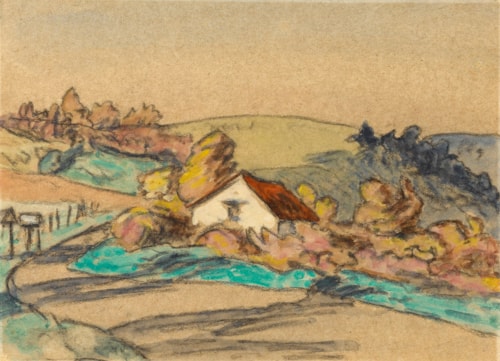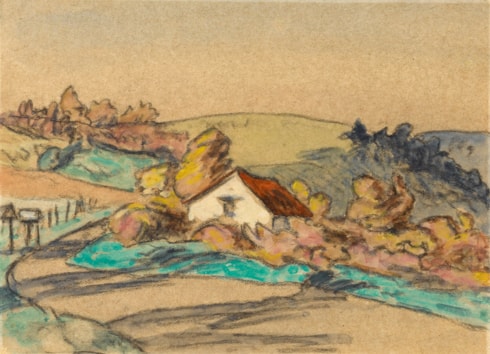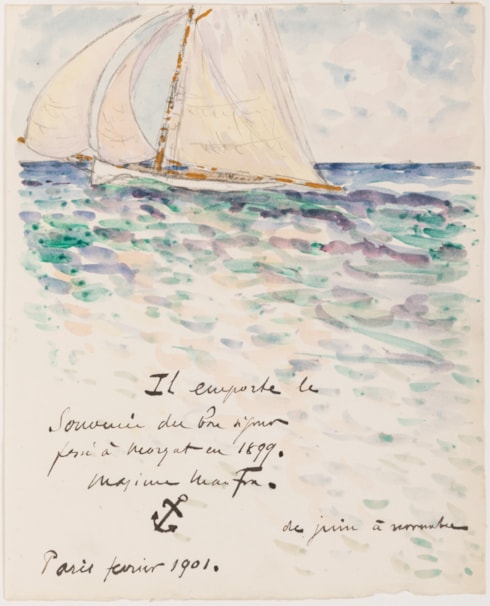
Maxime MAUFRA
Nantes 1861 - Poncé-sur-Loire 1918
Biography
A native of Brittany, Maxime Maufra was not formally trained as an artist and at first worked in commerce, painting only in his spare time. In 1881, at the age of twenty, he spent some time in England, where his exposure to the landscapes of John Constable and J. M. W. Turner influenced his decision to concentrate on his painting. Although he submitted two paintings to the Salon of 1886, which were singled out for praise in a review by Octave Mirbeau, he did not take up painting as full-time profession until 1890. In that year he made his first visit to Pont-Aven, where he met Paul Gauguin and Paul Sérusier. Two years later he settled in Montmartre in Paris, with a studio at the Bateau-Lavoir. He continued to spend a considerable amount of time in Brittany throughout the early 1890s, meeting several of the other painters working at Pont-Aven and Le Pouldu. Like Gauguin, Sérusier and Charles Filiger, Maufra contributed to the decoration of the inn of Marie Henry at Le Pouldu. Unlike many of these artists, however, he preferred to depict quiet, almost Symbolist landscapes devoid of figures. In an exhibition of his work at the Le Barc de Boutteville gallery in 1894, Maufra divided his landscapes into three different types, which he titled ‘Les effets’, ‘Les phénomenes’ and ‘Synthèses de la Bretagne’. Though the exhibition was well received by some critics, it did not result in many sales.
In 1896 Maufra’s fortunes rose when he was given his first exhibition at the Galerie Durand-Ruel, who soon had the artist under contract; this provided the artist with a steady income for the remainder of his career. Maufra’s friendship with Gauguin remained a close one until the latter’s departure for Tahiti, and the elder artist continued to encourage him in his work. (On a visit to his studio, Gauguin is said to have told Maufra, “I know you defend my art, and I am grateful. Our ways are totally different; yours is good, and you must go with it.”) Maufra spent his summers working in Brittany, a practice he maintained throughout his career, although he soon found Pont-Aven too crowded with artists and chose instead to live and work in more isolated communities, among fishermen and peasants. As Caroline Boyle-Turner has noted, ‘throughout his life, he retained his love of Breton subjects, exploring them again and again.’ Maufra worked along the entire southern coast of Brittany, from his hometown of Nantes to the Pointe de Raz. He was particularly fond of the landscape around Quiberon and bought a house there in 1903. In 1912 he spent some time in the Midi, and the following year visited Algeria. Like several artists of the Pont-Aven circle, Maufra was also active as a printmaker, working in etching and lithography. He died in 1918, at the age of fifty-seven.



